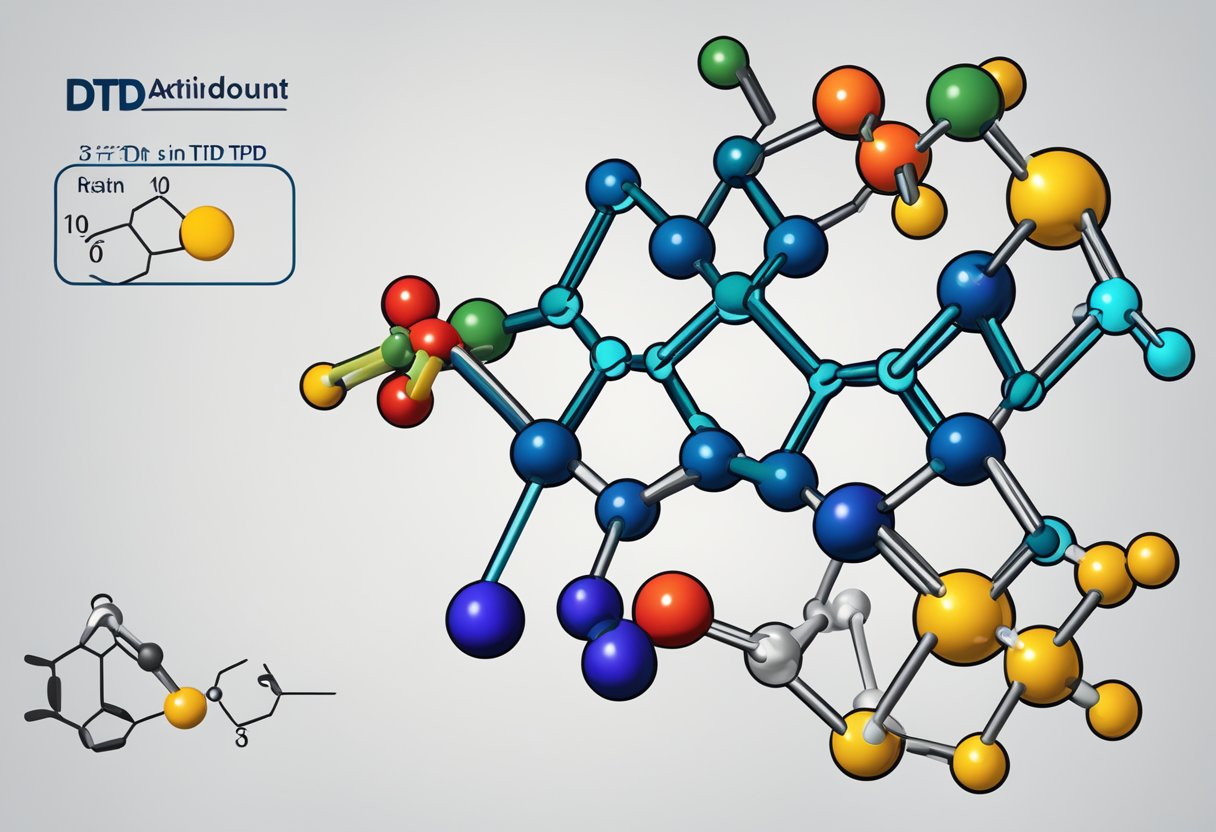DTPD Antioxidant: Benefits and Uses
19/01/2024
DTPD antioxidant is a synthetic compound that is widely used in various industries for its potent antioxidant properties. DTPD stands for di-tert-butylphenol, which is the chemical name of the compound. It is a type of hindered phenol antioxidant that is commonly added to rubber, plastics, lubricants, and other materials to prevent them from oxidative degradation.

One of the primary benefits of DTPD antioxidant is its ability to protect materials from the damaging effects of oxidation. When materials are exposed to oxygen, heat, and light, they can undergo a chemical reaction that leads to the breakdown of their molecular structure. This process, known as oxidation, can cause materials to become brittle, discolored, and weakened over time. DTPD antioxidant works by inhibiting this reaction, thereby extending the lifespan of materials and improving their performance.
In addition to its antioxidant properties, DTPD is also known for its stability and compatibility with a wide range of materials. It is non-toxic and non-corrosive, making it a safe and effective choice for use in various applications. As a result, DTPD antioxidant has become an increasingly popular choice among manufacturers looking to improve the durability and performance of their products.
Chemical Structure of DTPD Antioxidant

DTPD antioxidant, also known as 1,3-Di-tert-butyl-2,4,6-trimethylbenzene, is an effective antioxidant that is widely used in the rubber industry. Its chemical structure consists of a central benzene ring with four tert-butyl groups attached to it. The molecular formula of DTPD is C18H30, and its molecular weight is 246.44 g/mol.
The tert-butyl groups in the DTPD molecule provide steric hindrance, which makes it difficult for free radicals to attack the antioxidant. This hindrance makes DTPD a highly effective antioxidant, which can protect rubber products from oxidative degradation caused by heat, light, and oxygen.
The chemical structure of DTPD also makes it highly soluble in rubber compounds, which makes it easy to incorporate into rubber products during the manufacturing process. This solubility ensures that the antioxidant is evenly distributed throughout the rubber product, providing maximum protection against oxidative degradation.
In summary, the chemical structure of DTPD antioxidant consists of a central benzene ring with four tert-butyl groups attached to it. This structure provides steric hindrance, making it highly effective in protecting rubber products from oxidative degradation. The solubility of DTPD in rubber compounds also ensures that it is evenly distributed throughout the product, providing maximum protection.
Mechanism of Action for DTPD Antioxidant

Free Radical Scavenging
DTPD antioxidant is a potent free radical scavenger that can neutralize a wide range of reactive oxygen species (ROS) and reactive nitrogen species (RNS). ROS and RNS are highly reactive molecules that can damage cellular components, including proteins, lipids, and DNA, leading to cell death and tissue damage. DTPD antioxidant can donate an electron or hydrogen atom to these free radicals, effectively neutralizing them and preventing further damage.
Oxidative Stress Inhibition
DTPD antioxidant can also inhibit oxidative stress, which is a state of imbalance between the production of ROS and RNS and the ability of the body to detoxify them. Oxidative stress can lead to chronic inflammation, which is associated with many chronic diseases, including cancer, cardiovascular disease, and neurodegenerative disorders. DTPD antioxidant can activate antioxidant enzymes, such as superoxide dismutase (SOD) and catalase, which can detoxify ROS and RNS and reduce oxidative stress.
In conclusion, DTPD antioxidant is a potent antioxidant that can neutralize free radicals and inhibit oxidative stress. Its mechanism of action makes it a promising candidate for the prevention and treatment of many chronic diseases associated with oxidative stress.
Applications of DTPD Antioxidant
Industrial Uses
DTPD antioxidant is widely used in the industrial sector as a stabilizer for rubber products. It helps to prevent the degradation of rubber due to exposure to heat, light, and oxygen. DTPD antioxidant is also used in the production of plastics, lubricants, and petroleum products to prevent oxidation.
In addition, DTPD antioxidant is used in the production of biodiesel as an antioxidant to prevent the oxidation of unsaturated fatty acids. It is also used in the production of food packaging materials to prevent the oxidation of food products.
Pharmaceutical Significance
DTPD antioxidant has significant pharmaceutical applications. It is used in the production of drugs to prevent oxidation and degradation of active pharmaceutical ingredients. This helps to maintain the potency and stability of the drugs.
DTPD antioxidant is also used in the production of medical devices such as catheters and surgical instruments to prevent oxidation and degradation. This helps to ensure the safety and effectiveness of these devices.
In conclusion, DTPD antioxidant has a wide range of industrial and pharmaceutical applications. Its ability to prevent oxidation and degradation makes it an important component in many products.
Synthesis and Production of DTPD Antioxidant
DTPD antioxidant, also known as 1,4-bis (naphthyl) phenylenediamine, is a type of hindered phenolic antioxidant that is commonly used in the rubber industry. It is a highly effective antioxidant that provides excellent protection against thermal and oxidative degradation of rubber products.
The synthesis of DTPD antioxidant involves the reaction of 1,4-diaminonaphthalene with 1,4-dinitronaphthalene in the presence of a catalyst. The reaction is carried out under controlled conditions of temperature and pressure to ensure the formation of high-quality DTPD antioxidant.
The production of DTPD antioxidant involves several steps, including the synthesis of the raw materials, purification of the intermediates, and final formulation of the antioxidant. The raw materials used in the synthesis of DTPD antioxidant are carefully selected to ensure that they meet the required specifications for purity and quality.
Once the raw materials have been synthesized, they are purified using a series of techniques, including distillation, recrystallization, and chromatography. The purified intermediates are then combined and formulated into the final product, which is tested to ensure that it meets the required specifications for purity and quality.
Overall, the synthesis and production of DTPD antioxidant is a complex process that requires careful attention to detail and strict quality control measures. However, the end result is a highly effective antioxidant that provides excellent protection against thermal and oxidative degradation of rubber products.
Comparative Analysis With Other Antioxidants
Efficacy Comparison
DTPD antioxidant has been found to be highly effective in preventing oxidation of oils and fats in various food products. In comparison to other commonly used antioxidants such as BHA, BHT, and TBHQ, DTPD has been found to be more effective in preventing lipid oxidation in different food products, including edible oils, meat, and baked goods.
Studies have shown that DTPD antioxidant provides better protection against lipid oxidation in meat products compared to BHA and BHT. Similarly, DTPD has been found to be more effective in preventing the oxidation of edible oils compared to TBHQ. The higher efficacy of DTPD can be attributed to its ability to scavenge free radicals and chelate metal ions, which are known to catalyze lipid oxidation.
Cost-Benefit Analysis
Although DTPD antioxidant is more effective than other antioxidants, it is also more expensive. The cost of DTPD is approximately 2-3 times higher than that of BHA, BHT, and TBHQ. However, the higher cost of DTPD can be offset by its higher efficacy, which can result in longer shelf life and reduced product spoilage.
Moreover, DTPD is a natural antioxidant derived from plants, which makes it more attractive to consumers who prefer natural and organic products. In contrast, BHA, BHT, and TBHQ are synthetic antioxidants that have been associated with potential health risks.
In conclusion, while DTPD antioxidant may be more expensive than other commonly used antioxidants, its higher efficacy and natural origin make it a better choice for food manufacturers who want to ensure longer shelf life and reduce product spoilage.
Safety and Regulatory Aspects of DTPD Antioxidant
DTPD Antioxidant is a widely used antioxidant in various industries, including the rubber and petroleum industries. As with any chemical substance, it is important to consider the safety and regulatory aspects of DTPD Antioxidant.
Safety
DTPD Antioxidant has been evaluated for its safety by various regulatory agencies, including the US Environmental Protection Agency (EPA) and the European Chemicals Agency (ECHA). These evaluations have shown that DTPD Antioxidant has low toxicity and is not expected to cause any adverse health effects when used as intended.
However, it is important to handle DTPD Antioxidant with care and follow appropriate safety measures to minimize the risk of exposure. This includes wearing appropriate personal protective equipment (PPE), such as gloves and goggles, and ensuring proper ventilation when handling the substance.
Regulatory Aspects
DTPD Antioxidant is regulated under various laws and regulations, including the Toxic Substances Control Act (TSCA) in the United States and the Registration, Evaluation, Authorization and Restriction of Chemicals (REACH) regulation in the European Union.
Under these regulations, manufacturers and importers of DTPD Antioxidant are required to submit data on the substance’s properties, uses, and potential risks to regulatory agencies. This information is used to determine whether the substance can be used safely and whether any restrictions should be placed on its use.
Overall, DTPD Antioxidants is considered to be safe when used as intended and in accordance with appropriate safety measures. However, it is important to follow all applicable regulations and guidelines to ensure the safe handling and use of this substance.
Market Trends and Future Outlook for DTPD Antioxidants
DTPD antioxidants is gaining popularity in the market due to its superior properties as compared to other antioxidants. It is widely used in the rubber industry as it offers excellent protection against heat, oxygen, and ozone, which are the primary causes of rubber degradation.
The global demand for DTPD antioxidants is expected to increase in the future due to the growing automotive industry, which is the major end-user of the rubber industry. The increasing demand for high-performance tires, which require excellent resistance to heat and ozone, is driving the demand for DTPD antioxidants.
Moreover, the increasing demand for eco-friendly products is also expected to boost the demand for DTPD antioxidants. It is a non-toxic and non-polluting antioxidant, making it an ideal choice for various applications.
In terms of geography, the Asia Pacific region is the largest market for DTPD antioxidants, owing to the presence of a large number of rubber manufacturing industries in countries such as China, India, and Japan. The region is expected to witness significant growth in the future due to the increasing demand for automobiles and tires.
In conclusion, the future outlook for DTPD antioxidants looks promising, driven by the increasing demand for high-performance tires and eco-friendly products. The market is expected to witness significant growth in the Asia Pacific region, with China and India emerging as the major markets for DTPD antioxidants.
Environmental Impact of DTPD Antioxidants
DTPD antioxidants is a widely used chemical compound in the rubber industry. It provides excellent protection against oxidative degradation and improves the durability of rubber products. However, the production and use of DTPD antioxidant can have some environmental impacts.
One of the potential environmental impacts of DTPD antioxidants is the release of hazardous substances during its production. The manufacturing process of DTPD antioxidants involves the use of various chemicals, some of which can be harmful to human health and the environment. Therefore, it is essential to ensure that proper safety measures are in place to prevent any accidental releases of these substances.
Another environmental impact of DTPD antioxidants is the disposal of waste generated during its production. The waste can contain residual chemicals and other contaminants that can be harmful to the environment. Therefore, it is important to properly dispose of the waste and follow all relevant regulations.
In addition, the use of DTPD antioxidants in rubber products can also have some environmental impacts. When rubber products containing DTPD antioxidants reach the end of their useful life, they may be disposed of in landfills or incinerated, which can release harmful substances into the environment. Therefore, it is important to consider the end-of-life disposal of rubber products containing DTPD antioxidants and explore alternative disposal methods.
Overall, while DTPD antioxidants provides significant benefits to the rubber industry, its production and use can have some environmental impacts. It is important to take appropriate measures to minimize these impacts and ensure the safe and responsible use of this chemical compound.




